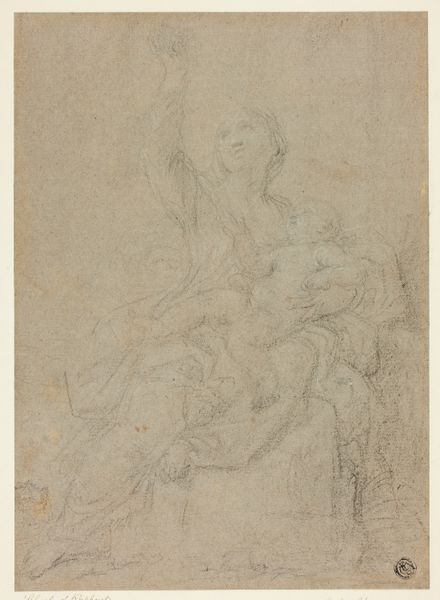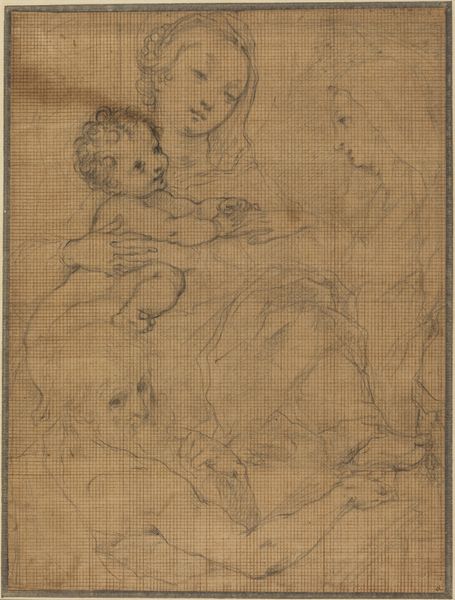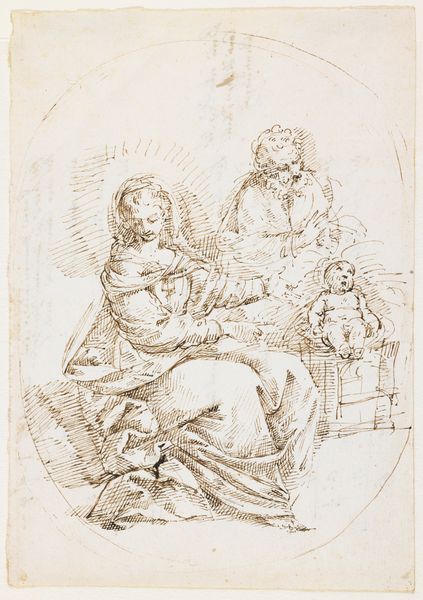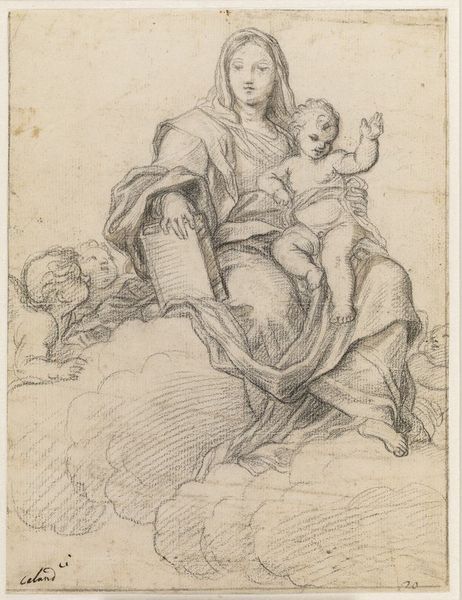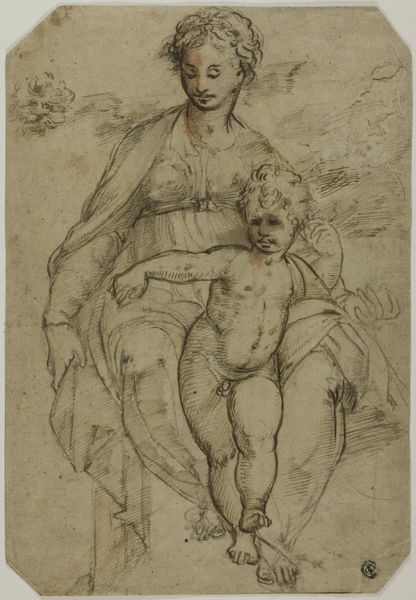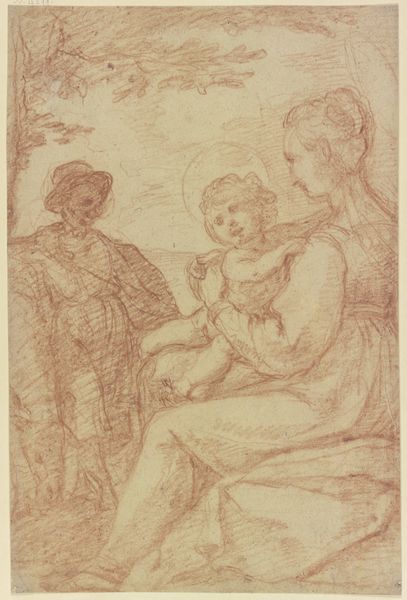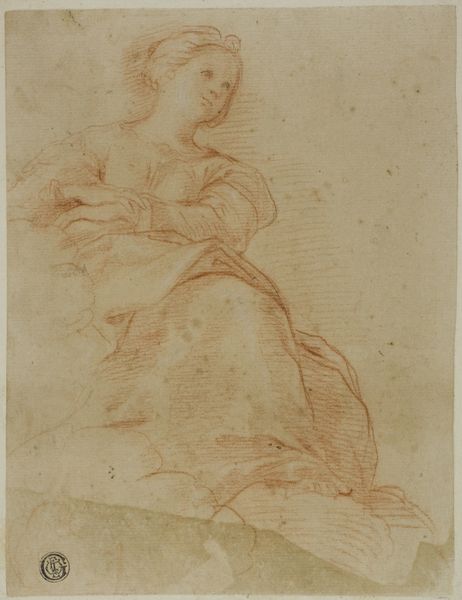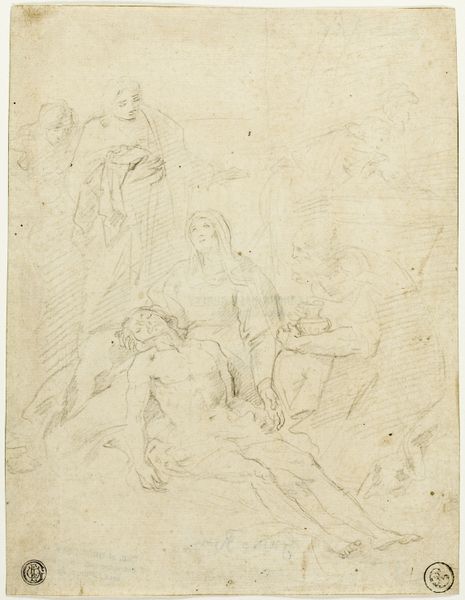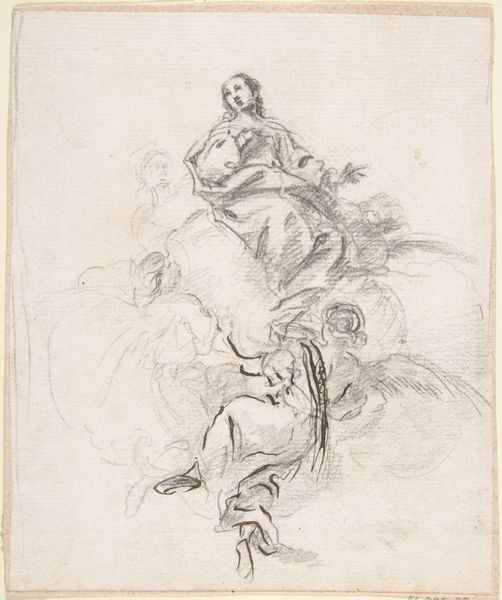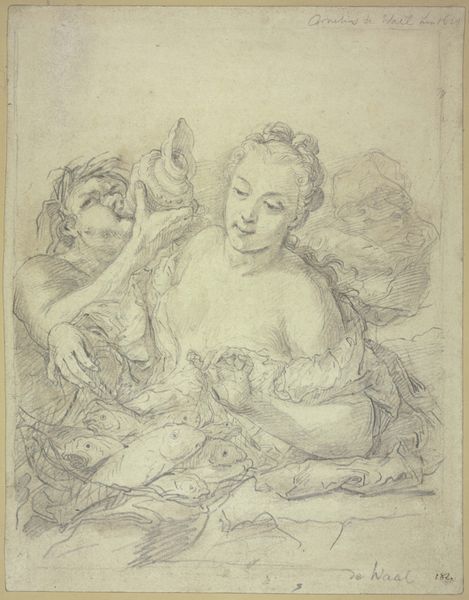
drawing, paper, pencil, chalk
#
portrait
#
drawing
#
figuration
#
paper
#
pencil
#
chalk
Dimensions: 252 × 186 mm
Copyright: Public Domain
Curator: This is an untitled drawing, often referred to as "Madonna and Child," created by an anonymous artist, employing chalk and pencil on paper. It resides here at The Art Institute of Chicago. Editor: There’s a stark vulnerability in its unfinished quality, almost like a glimpse behind the scenes. I’m immediately struck by its intimate, domestic feel despite the grand subject. Curator: Indeed. Observe how the artist masterfully uses line weight and shadow to define the figures, despite the absence of color or background detail. The ovular framing device really works to further concentrate our attention. Semiotically, the circle can often denote "wholeness." Editor: And it centers motherhood in that way, reinforcing conventional visual tropes regarding idealized maternal femininity—which is certainly problematic. Consider how the original location of this artwork dictated such themes. Who did this representation serve? Curator: Fair point. Still, regardless of its historical function, there is such a striking mastery of form displayed in the infant Christ’s body; it projects so much presence within a preliminary sketch. Editor: While appreciating the craft, we need to simultaneously challenge this visual language of deification—the near-perfect, Westernized baby that implies the divine through its sheer aesthetic "completeness." And note Mary’s expression, one that feels resigned rather than celebratory. Her narrative needs acknowledging, too. Curator: Certainly, this pushes against traditional idealizations. What could we glean if we consider this image in a purely formalist perspective? Its balance, the symmetry of the faces countered by asymmetry in the drapery—there are many binaries presented for decoding. Editor: But binaries must be problematized, particularly those surrounding gender and race within art history. Whose stories do such forms erase in their visual presentation of these specific aesthetic criteria? Curator: It seems we each found something captivating—and, granted, unsettling—about this work. Editor: Yes, may we always keep in mind art's ability both to reflect and reinforce broader power dynamics when engaging with artworks from varied histories.
Comments
No comments
Be the first to comment and join the conversation on the ultimate creative platform.
